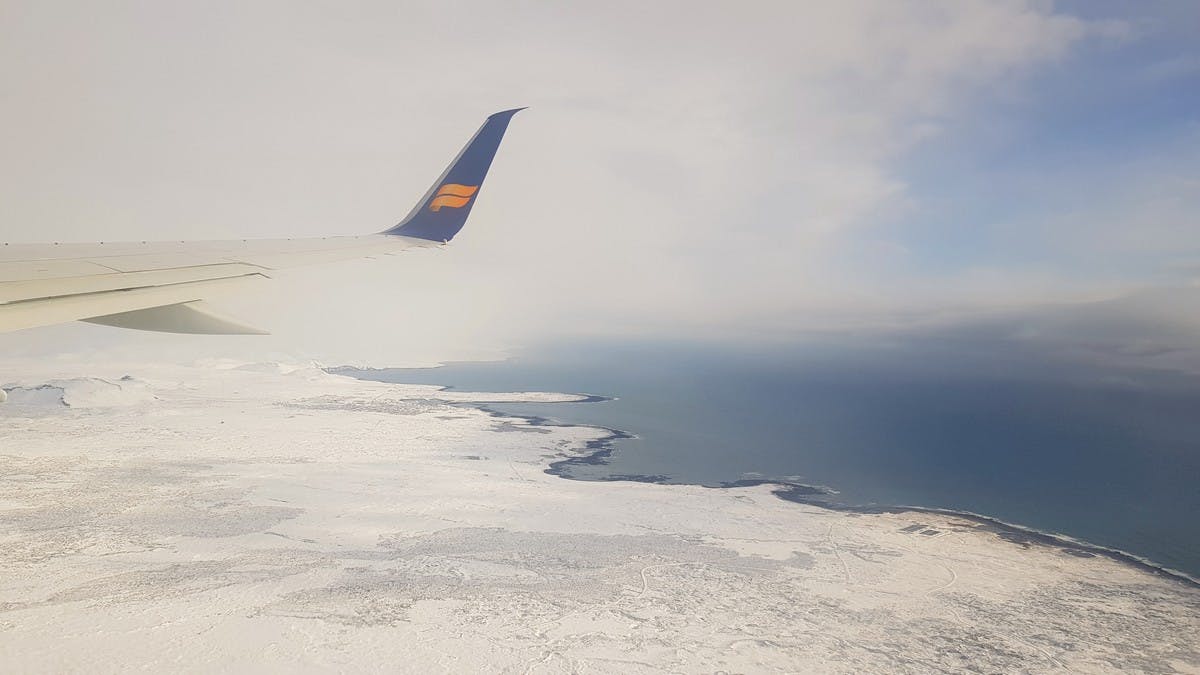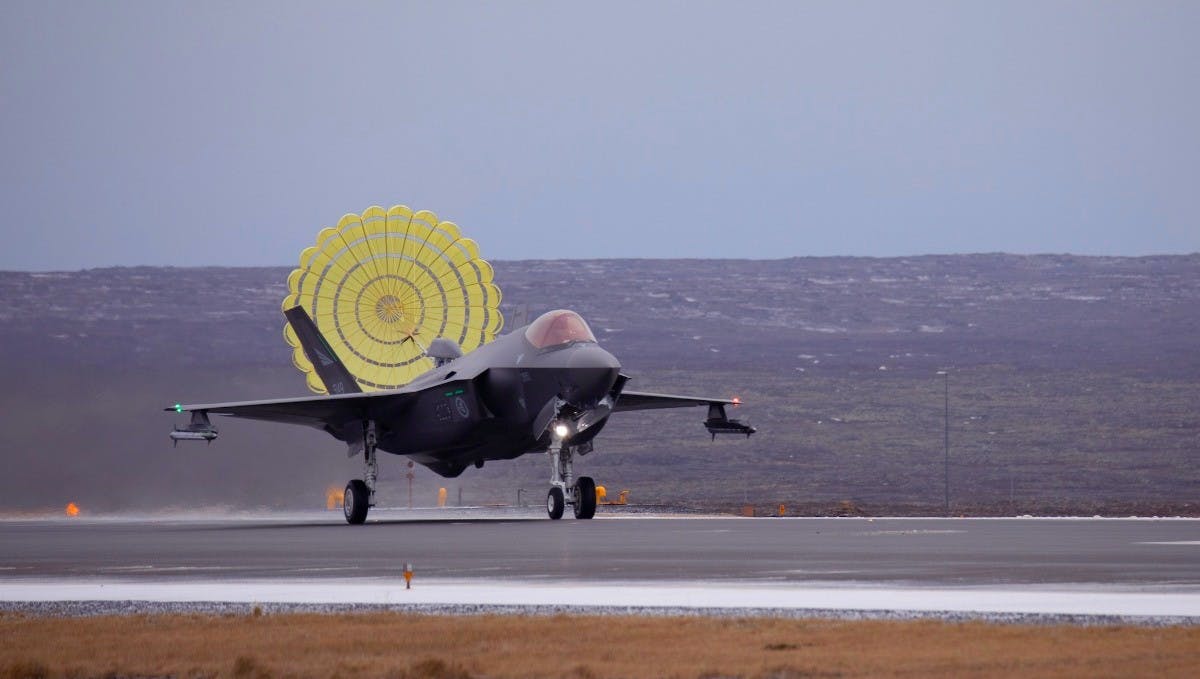The Royal Norwegian Air Force F-35 detachment conducting NATO’s air mission in Iceland presented their activities to the media at Keflavik Air Base.
After watching the F-35 rolling past on the icy taxiway, journalists had an opportunity to interview senior military representatives about the Norwegian deployment which highlights the special arrangement that exists for Iceland to ensure NATO-wide Air Policing.
“We have successfully accomplished our certification only last Friday to carry out the Allied mission here in Iceland,” said the Lieutenant-Colonel Stole Nymoen welcoming everyone.

“We are now providing Quick Reaction Alert duty for Iceland with the F-35 and at home with the F-16 flying out of Bodø – a complex task,” he added and was visibly proud of his team’s achievements.
The NATO representative, Allied Air Command Deputy Chief of Staff Support Air Commodore Jason Appleton, thanked Iceland for their strong contribution to NATO.
“You are providing the essential air surveillance over Iceland and the North Atlantic, the crucial search and rescue cover for our NATO airmen and women,” he said, enabling “ten of our Allies to reinforce the mission here, firmly interlocking Iceland into the Allied air policing structures”.

For the next two weeks the Norwegian F-35 detachment will be working with their Icelandic hosts to accomplish the mission of providing Airborne Surveillance and Interception Capabilities to ensure Iceland’s Peacetime Preparedness Needs. Overseen by Allied Air Command, This is one example of how NATO ensures collective defence of the Allies in the Air domain.
Why is Iceland so important?
The GIUK Gap is the name for the maritime channels between Greenland, Iceland and the United Kingdom which connect the Arctic Ocean and the Norwegian Sea with the North Atlantic.

During the Cold War, these maritime passages were the only routes for Soviet submarines to leave naval bases in northern Russia and have access to the Atlantic Ocean. Today is no different, Russian submarines are still monitored as their activity increases. We reported a while back that Russian submarine activity in the North Atlantic had ‘increased tenfold’.
During an address to the Royal United Service Institute’s conference on sea warfare, Defence Secretary Gavin Williamson said:
“We’re rapidly having to come to terms with this new age of warfare. Look at Russia’s resurgence under President Putin. Its submarine activity has increased 10-fold in the North Atlantic. That’s not all. In 2010, the Royal Navy had to respond once to a Russian Navy ship approaching UK territorial waters. Last year we had to respond 33 times.”
One of the main tasks of the NATO forces stationed at Keflavík is therefore to monitor for submarines and aircraft in the GIUK Gap.

A network of NATO and Icelandic assets – including Boeing P-8 Maritime Patrol Aircraft, coast guard vessels, helicopters and radars – monitor Russian aerial and submarine activity in the region.
In case you weren’t aware, Iceland is the only NATO member state that does not have its own military forces.















Blue Lagoon, the Geysers, and the Foss waterfall were all highlights when we went in 2006.
Expensive place though!
Sadly we missed out on the Blue Lagoon due to a snow storm. Expensive but worthwhile!